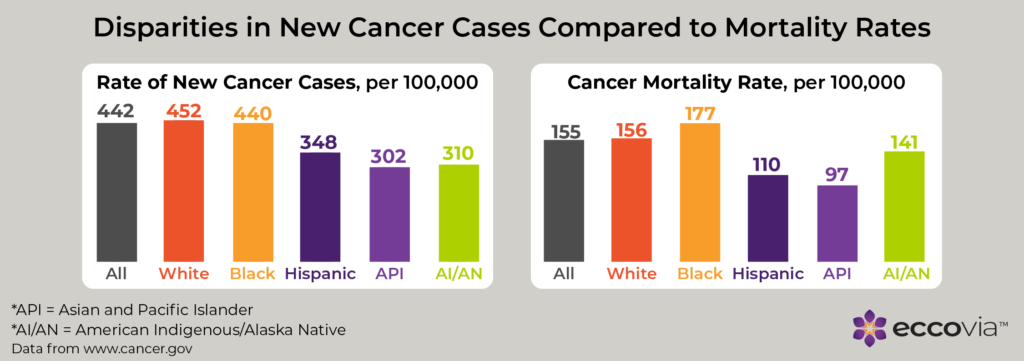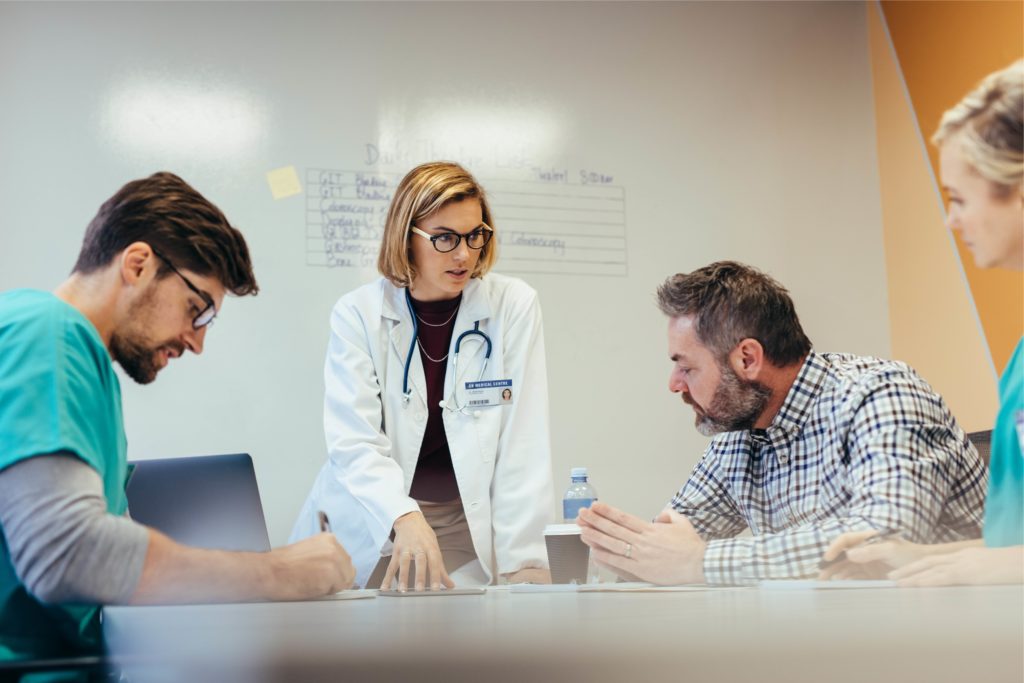What is the best treatment for cancer? While there may not be one simple answer, experts agree on the importance of a whole person care approach. Through social determinants of health, programs and organizations can better help cancer patients by providing the care that they need.
Learning that you or your loved one has cancer is life changing.
It can spike immediate anxiety with thoughts of painful and intrusive treatments, low survival rates, and high financial costs. Additionally, the unpredictability of cancer means that those diagnosed face constant uncertainty regarding their future.
Unsurprisingly, cancer is considered the most-feared disease in the US (1).
While a sure-fire cure for cancer is not currently available in our modern health care system, new and innovative approaches are changing the game for those diagnosed. By looking to whole person care, a popular system of care for many health and human services organizations, experts are beginning to turn the tide for cancer patients.
THE STATE OF CANCER IN THE US
First, we need to understand exactly where cancer rates currently sit.
Experts estimate that 2020 had over 1.8 million cases of cancer in the US and that more than 600,000 individuals died from the disease (2). While these numbers are jarring, they are actually in line with a steady decreasing trend over the past two decades. Cancer treatments are improving exponentially, and with that will come lower mortality rates.
Regardless, not all individuals face the same outlook. Despite having comparable rates of new cancer cases, Black Americans are significantly more likely to die from cancer than white Americans (3).

While white Americans have the highest rates of new cancer cases, they do not
have the highest mortality rates. Disparities across demographics are persistent.
This racial disparity is only one of many for cancer patients. Social determinants of health have proven to be one of the most effective predictors of increased challenges. Lack of access to health insurance, transportation, social support, and community coordination are all factors that increase risk of both cancer development and mortality in individuals.
Quite simply, those most likely to struggle with cancer treatments are also those with the least resources for help.
As more health and human service organizations are finding that whole person care is an effective method for addressing social determinants of health, many are wondering: could this same approach work for cancer care?
CAN A WHOLE PERSON CARE APPROACH WORK?
The straightforward answer is yes.
Cancer patients needs go far beyond medical interventions—they include psychological, emotional, physical, spiritual, sexual, occupational, social, and existential demands. When providers address these additional areas of care, they can provide holistic treatments that better serve the individual.
Traditional cancer care is solely focused on providing treatments like radiation or chemotherapy. However, these treatments fail to address non-medical issues, such as a patient unable to find transportation to chemotherapy or secure childcare during hospital visits.
A whole person care model, on the other hand, ensures that providers are aware of the struggles surrounding transportation and childcare, as well as coordinating with community services to provide resources to individuals to overcome them.
This example illustrates why data systems like ClientTrack™ encourage community care coordination and are so crucial to whole person care. Streamlining the data and reports process can help the most vulnerable receive the resources they need in a timely manner. In turn, this can more effectively and efficiently improve organizational function.

While cancer rates are on the decline, it is still the second
leading cause for death in the United States.
WHOLE PERSON CARE FOR CANCER IN THE REAL WORLD
Several cancer care programs are actively and successfully using WPC models.
Cancer Life reiMagined (CaLM), has been using whole person care to treat their patients since 2018 (4). While typical care begins with medical treatment and then refers patients to additional care (like psychiatric or palliative help) as needed, CaLM actively inverts this model.
Instead, they use supportive care systems as the anchor and then treat medical care as additional care. This model not only creates a more intuitive, coordinated care system for the patient, but it also lends itself to more holistically addressing roadblocks that come from social determinants of health.
Most importantly? It is effective.
Most patients who initially report moderate to severe symptoms can reduce them to mild or none (5). Mental health indicators, such as depression and anxiety, are much lower among patients in CaLM than those of traditional care structures.
“This is a model that helps make sure that the whole person gets care, so the patient does better, and providers do better because they’re supported in all the really hard things that we ask our cancer treatment professionals, both nurses and doctors, to do,” states Elizabeth Kvale, CaLM Program Leader.
A FUTURE OF WHOLE PERSON CARE
The CaLM program is just one of many examples showing the effectiveness of whole person care. As more organizations adopt a whole person care approach, they may be able to mitigate more than just cancer treatment. As effectiveness continues to grow, whole person care could potentially be the key to addressing not only cancer, but a myriad of other diseases and disorders.
ENJOY THIS ARTICLE? YOU’LL LOVE THIS:
7 Ways Your Program Can Start Implementing Whole Person Care



